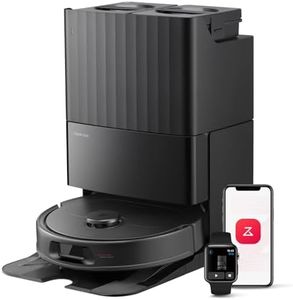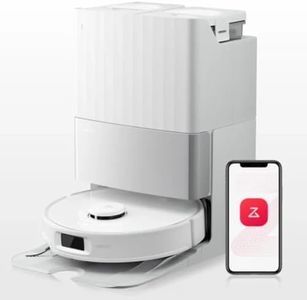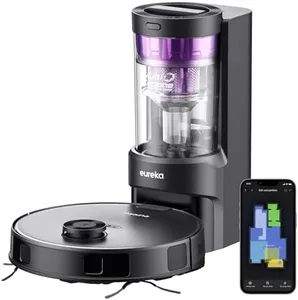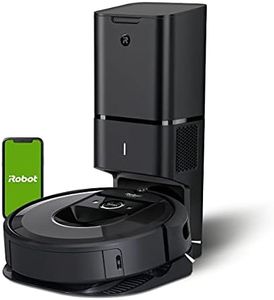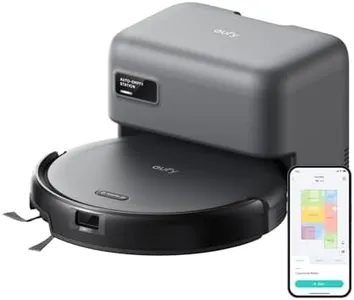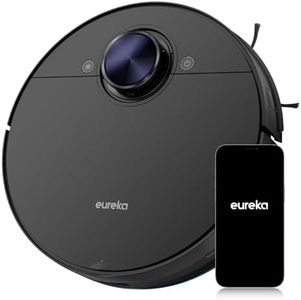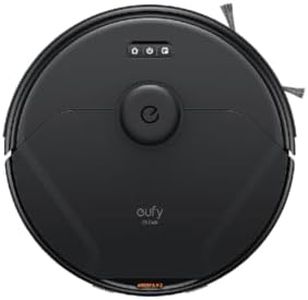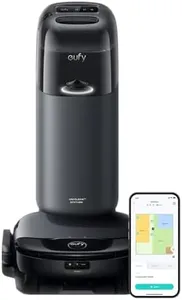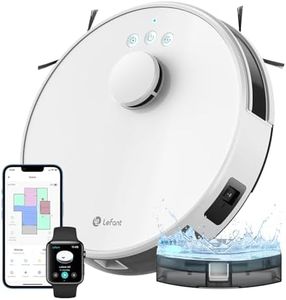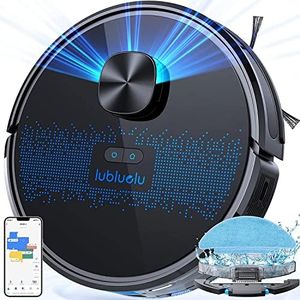We Use CookiesWe use cookies to enhance the security, performance,
functionality and for analytical and promotional activities. By continuing to browse this site you
are agreeing to our privacy policy
10 Best Robot Vacuum For Carpet
From leading brands and best sellers available on the web.Buying Guide for the Best Robot Vacuum For Carpet
Choosing a robot vacuum for carpeted floors is all about finding a machine that can handle thicker surfaces and effectively lift dirt from between carpet fibers. Since carpets require more power and specific features than hard floors, focus on specs that relate to suction, brush types, and cleaning modes. Consider your carpet type and how frequently you expect to use the robot. Taking into account your home size, carpet pile, and any potential obstacles will ensure you choose a robot vacuum that meets your day-to-day needs and helps maintain clean, fresh carpets.Suction PowerSuction power is a measure of how strongly the vacuum can pull dirt and debris from the surface it's cleaning. This spec is especially important for carpets, where dust and particles settle deep within the fibers. Suction power is often listed in units like Pa (pascals). Lower values (under 1500 Pa) are generally suitable for hard floors and low-pile carpets, middle ranges (1500-2500 Pa) can handle most mid-pile carpets, while the highest ranges (above 2500 Pa) are best for thick or high-pile carpets and homes with pets. To pick the right one, consider the thickness and density of your carpets—thicker and plusher carpets benefit from higher suction, while low-pile carpets don't need as much power.
Brush Type and DesignThe brush system affects how well a robot vacuum can agitate and lift debris from carpet fibers. Brushes typically come in bristle, rubber, or a combination of both. Bristle brushes work well on carpets by digging into fibers, whereas rubber brushes are less likely to tangle with hair and are easier to clean. Some vacuums have dual brushes for even better cleaning. If your carpets are thick or you have pets that shed, look for multi-surface or specially designed carpet brushes to ensure a deeper and more effective clean.
Automatic Surface AdjustmentSome robot vacuums can automatically sense and adjust their cleaning power or brush height when moving between hard floors and carpets. This feature helps maintain the right balance between efficiency and power, preventing robots from getting stuck or missing dirt. If your space features both hard and carpeted areas, or if your carpets are of varying thicknesses, automatic adjustment can make day-to-day cleaning more hassle-free and thorough.
Height and MobilityThe height of a robot vacuum determines if it can easily climb onto thicker carpets and transition over thresholds. Most standard models can handle low to medium-pile carpets, but only some are designed to navigate high-pile or shag carpets effectively. When choosing, think about the pile of your carpet: if you have thick or fluffy carpets, look for a robot with good climbing ability and larger wheels, which help prevent getting stuck.
Filtration SystemThe filtration system, often featuring HEPA or high-grade filters, is important for trapping dust and allergens, which are commonly found in carpet fibers. This is especially useful if you have allergies or pets. Basic filters catch large dust particles, while higher-end filters can trap finer dust and allergens. Homes with family members sensitive to dust should prioritize vacuums with advanced filtration.
Battery Life and NavigationA robot vacuum with a longer battery life can clean more area in one go—a key consideration for homes with extensive carpeting, which often takes more time to clean. Smart navigation helps the vacuum move efficiently and avoid missing spots or getting stuck, especially on thick carpets. If you have a larger home or lots of carpeted rooms, longer run time and intelligent mapping can save both time and effort.
